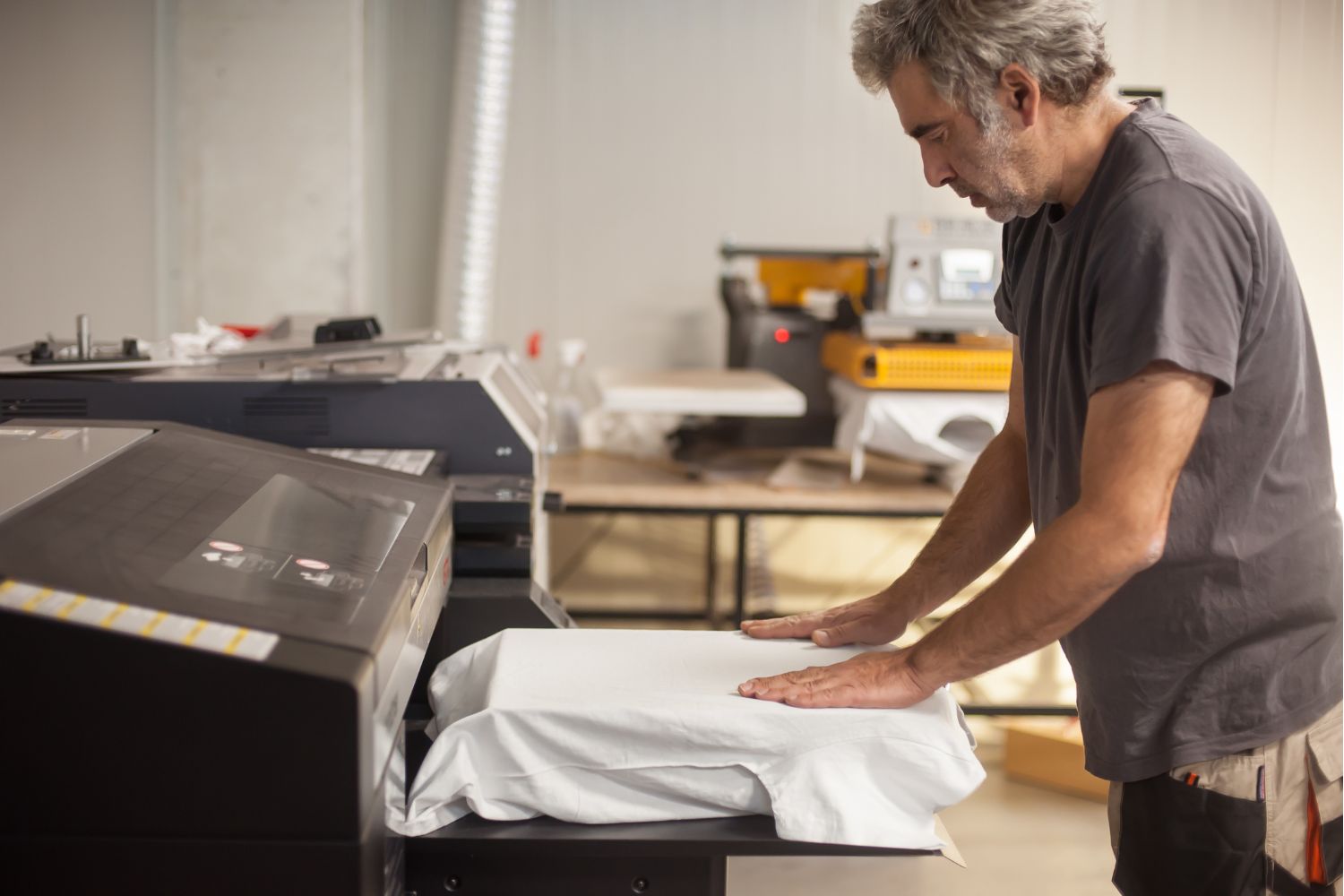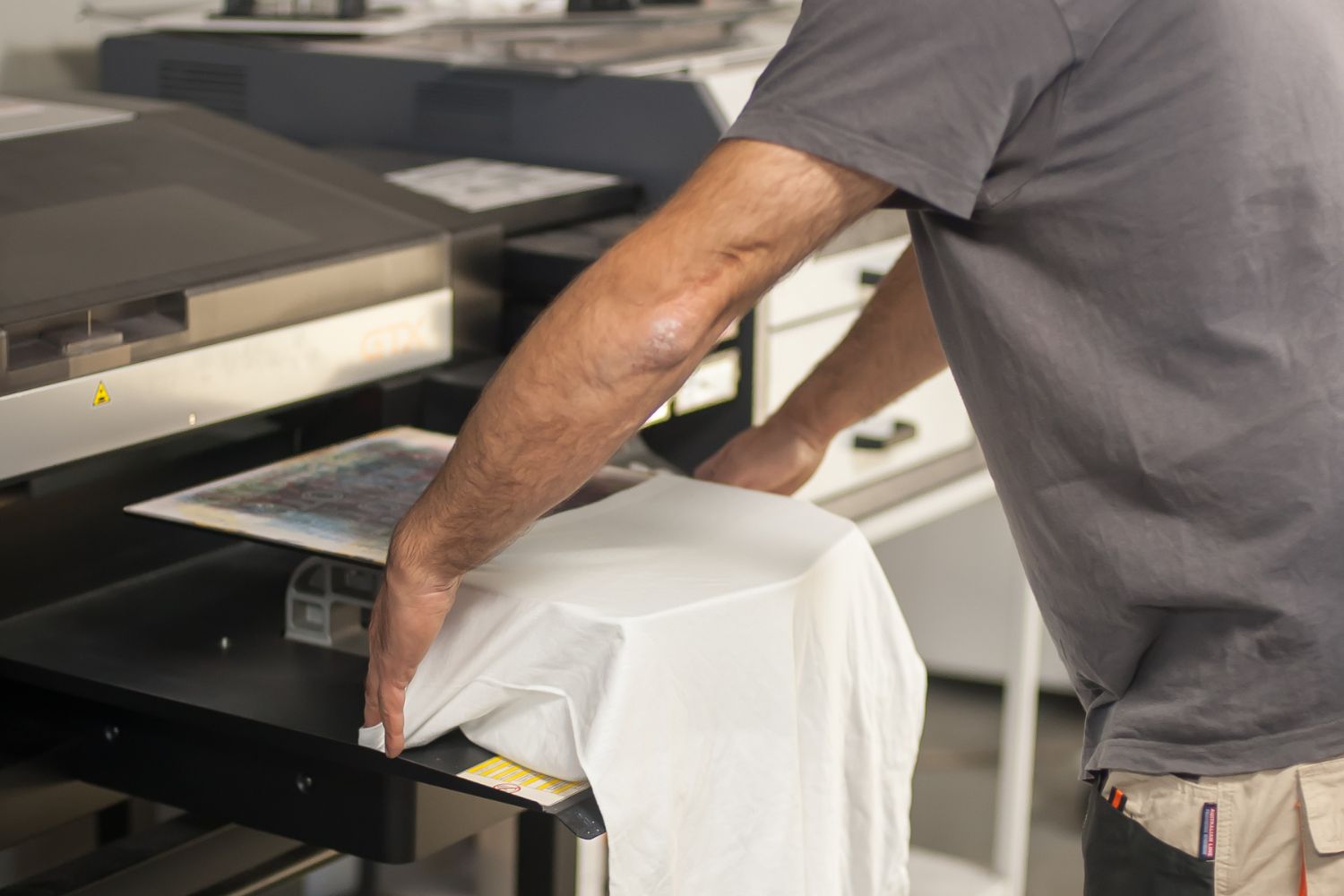Introduction
DTG (Direct To Garment) printing is a revolutionary technology that allows for the production of highly detailed and colorful designs on a variety of textiles. However, achieving perfect results requires more than just a good printer: the final quality depends on many parameters . A simple error in textile preparation, ink adjustment, or machine maintenance can turn a promising print into a complete failure.
DTG printing professionals often encounter the same problems: faded prints, poorly absorbed ink, smearing, poor color rendering, rapid deterioration after washing ... All these problems are avoidable with good practices . By understanding common mistakes in DTG printing , you can not only improve your results, but also optimize your production costs and avoid waste.
In this article, we'll guide you through the most common DTG printing mistakes and give you the best solutions to avoid them. You'll learn how to adjust your settings, maintain your equipment, and ensure high-quality DTG printing on every garment.
👉 Optimize your printing now with our complete range of DTG supplies !
Poor textile preparation: the basis of many problems
The importance of pre-treatment to avoid dull prints
One of the common mistakes in DTG printing is neglecting textile pretreatment, especially when printing on dark garments. Improperly applied or insufficient pretreatment results in poor ink adhesion , resulting in a faded and short-lasting finish.
👉 Achieve better ink adhesion with our DTG pre-treatment solution .
Textiles not suitable for DTG printing
Not all fabrics react the same way to DTG ink. 100% cotton is still the ideal fabric, but an 80% cotton/20% polyester blend will also give you good results.
Print setting errors that affect rendering quality
Poor color management and ICC profiles
Using poorly calibrated color profiles can result in color discrepancies between the original file and the final print. A good ICC profile can optimize color rendering and avoid a result that is too dull or oversaturated.
👉 Use our optimized DTG ink for a vibrant and faithful rendering of your designs.
Incorrectly dosed ink: too much or not enough ink?
Too little ink density results in a dull print, while too much ink can saturate the fabric and cause smearing. Properly adjusting the software RIP allows you to adjust the amount of ink applied to the fabric.
Example: Prints ruined by incorrectly set ink density
A printer wasted several T-shirts because the white ink was too dense on black fabrics, causing smearing. After adjusting the RIP software, his prints became sharper and more precise.
👉 Reduce your waste and improve sharpness with our tailored DTG solutions .
Improper heat fixation reduces print durability
Improperly adjusted heat press can ruin everything
Improper heat fixation can cause color fading and quality loss after washing . The temperature and pressing time should be adjusted according to the textile used.
Avoid press marks on your textiles
Heat press marks can appear if the pressure is too strong or if the fabric is not properly prepared before pressing. Using parchment paper or a Teflon sheet can help prevent this problem.
Example: Dissatisfied customers after poorly fixed prints
A clothing brand received numerous complaints because its designs were fading after a few washes. After testing a longer press at 165°C , the prints' durability improved significantly.
Lack of DTG printer maintenance: the cause of many malfunctions
Clean your print heads regularly to avoid clogging
One of the most common problems in DTG printing is printhead clogging due to ink residue. Daily cleaning with a suitable solution maintains fluidity and prevents print damage.
👉 Extend the life of your printer with our DTG cleaning solution .
Check and replace wear parts
Dampers, wipers and ink filters wear out over time and must be replaced regularly to avoid loss of print quality.
Example: A printer down for a week due to lack of maintenance
A workshop had to shut down production for a week because a print head blockage required costly technical intervention. A weekly maintenance program has since been implemented.
👉 Preserve your equipment with our DTG maintenance range .
Conclusion
Common mistakes in DTG printing can be costly in terms of time and raw materials. Fortunately, with the right practices , you can avoid them and ensure long-lasting, high-quality prints.
- Proper pretreatment is essential for perfect ink adhesion.
- Precise adjustment of colors and ink density ensures faithful and vibrant rendering.
- Properly calibrated heat pressing helps prevent color loss and improves wash resistance.
- Regular maintenance of the DTG printer ensures smooth production and extends the life of the equipment.
By applying these tips, you can maximize your profitability and deliver prints that will build customer loyalty.
👉 Equip yourself with our professional DTG solutions and get perfect prints every time!




Leave a comment
This site is protected by hCaptcha and the hCaptcha Privacy Policy and Terms of Service apply.